Korean Spinach Side Dish (Sigeumchi Namul) Two Ways
Make Korean spinach side dish, sigeumchi namul, two ways — mild with soy sauce and sesame oil or bold with gochujang and doenjang. A quick, healthy spinach banchan you’ll want with every meal.
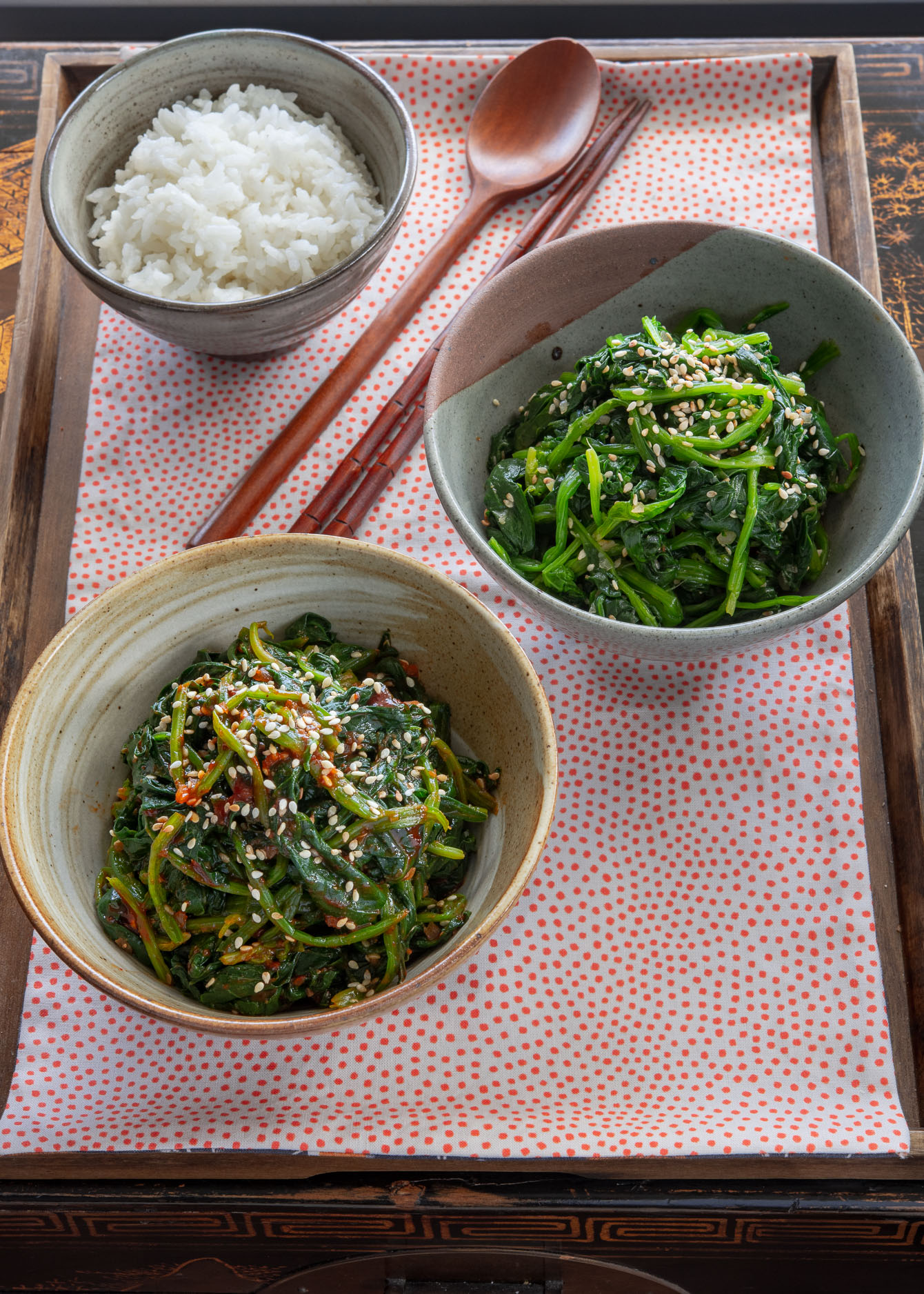
Spinach Banchan Two Ways: Classic and Spicy
In Korea, no meal feels complete without a few small side dishes, called banchan. Among them, spinach namul (시금치나물) is one of the simplest and most loved. Just a quick blanch, a squeeze, and a light seasoning turn fresh spinach into a healthy, flavorful dish that appears on everyday tables and in bibimbap
The soy sauce and sesame oil version is the one most Koreans know best — mild, nutty, and comforting. But in my hometown of Gyeongsang province of the south, we make spinach namul with gochujang and a little doenjang for a deeper, spicier flavor.
That’s the way my mom always prepared it. I enjoy both styles, but I often miss the hometown version — and my family loves it just as much as I do.
I’ll be sharing both versions here — the mild soy sauce style and the bold, spicy Gyeongsang style. They’re quick, simple, and each has its own charm. Try them both and see which one becomes your favorite.
Preparing the Spinach
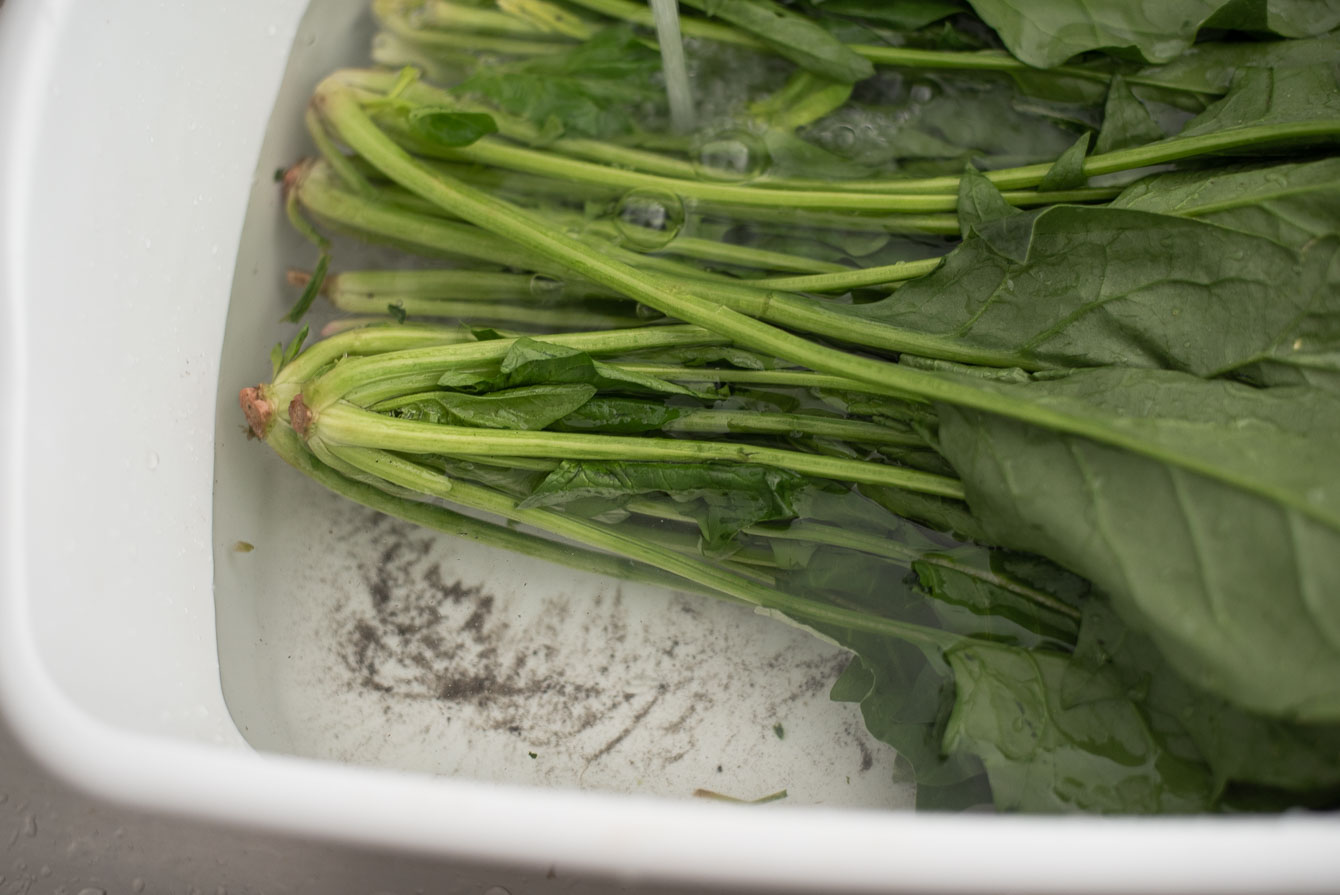
Spinach for namul needs a thorough wash since dirt often hides around the roots and stems. I usually soak the bunch in a large bowl of water, then lift it out so the grit stays behind. A couple of rinses are enough to get it clean and ready to blanch.
Don’t skip this step — even a little grit can ruin the soft, delicate texture of the namul.
How to Make Spinach Namul
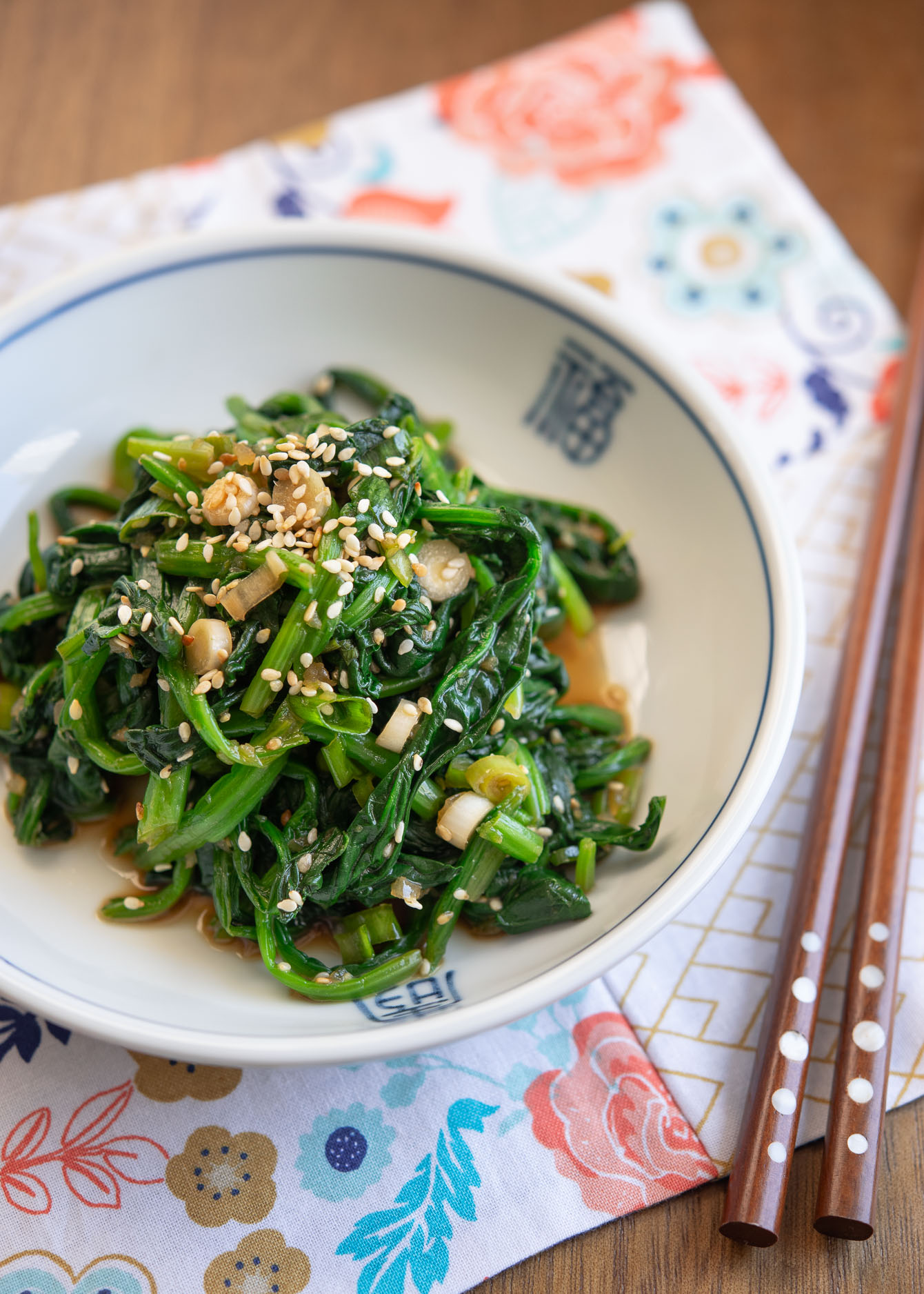
Classic Soy Sauce & Sesame Oil Version
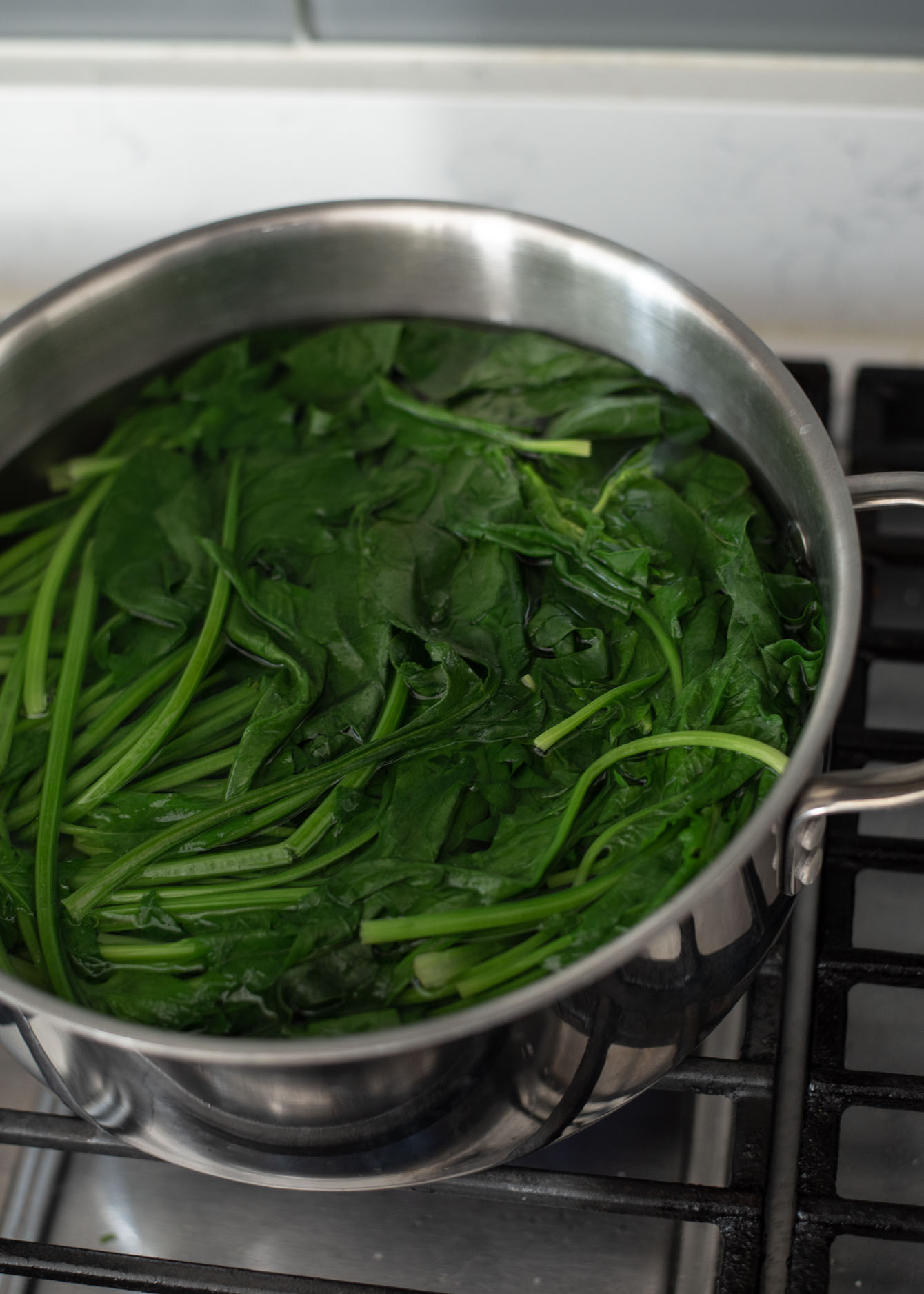
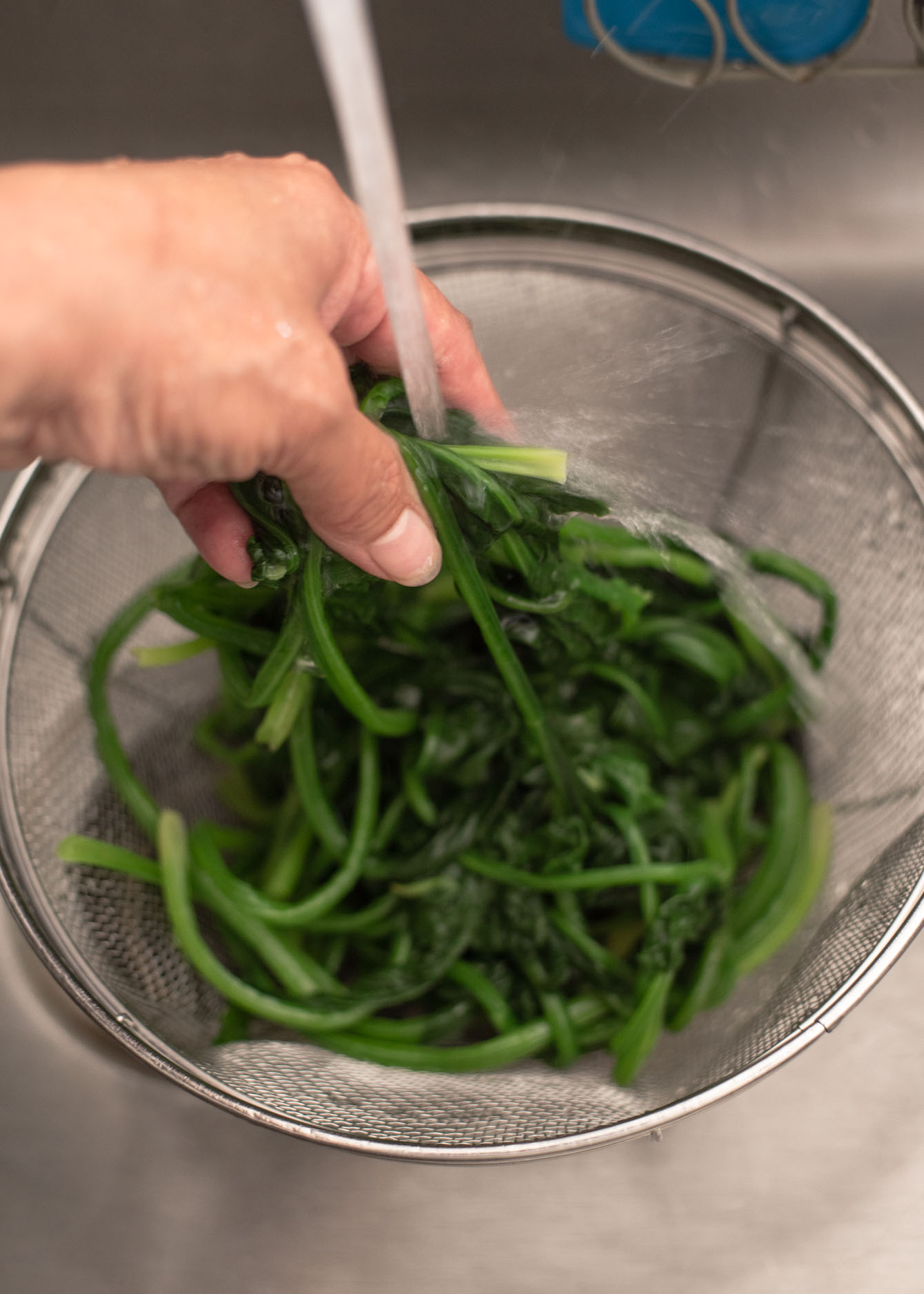
Blanch the spinach quickly, rinse in cold water.
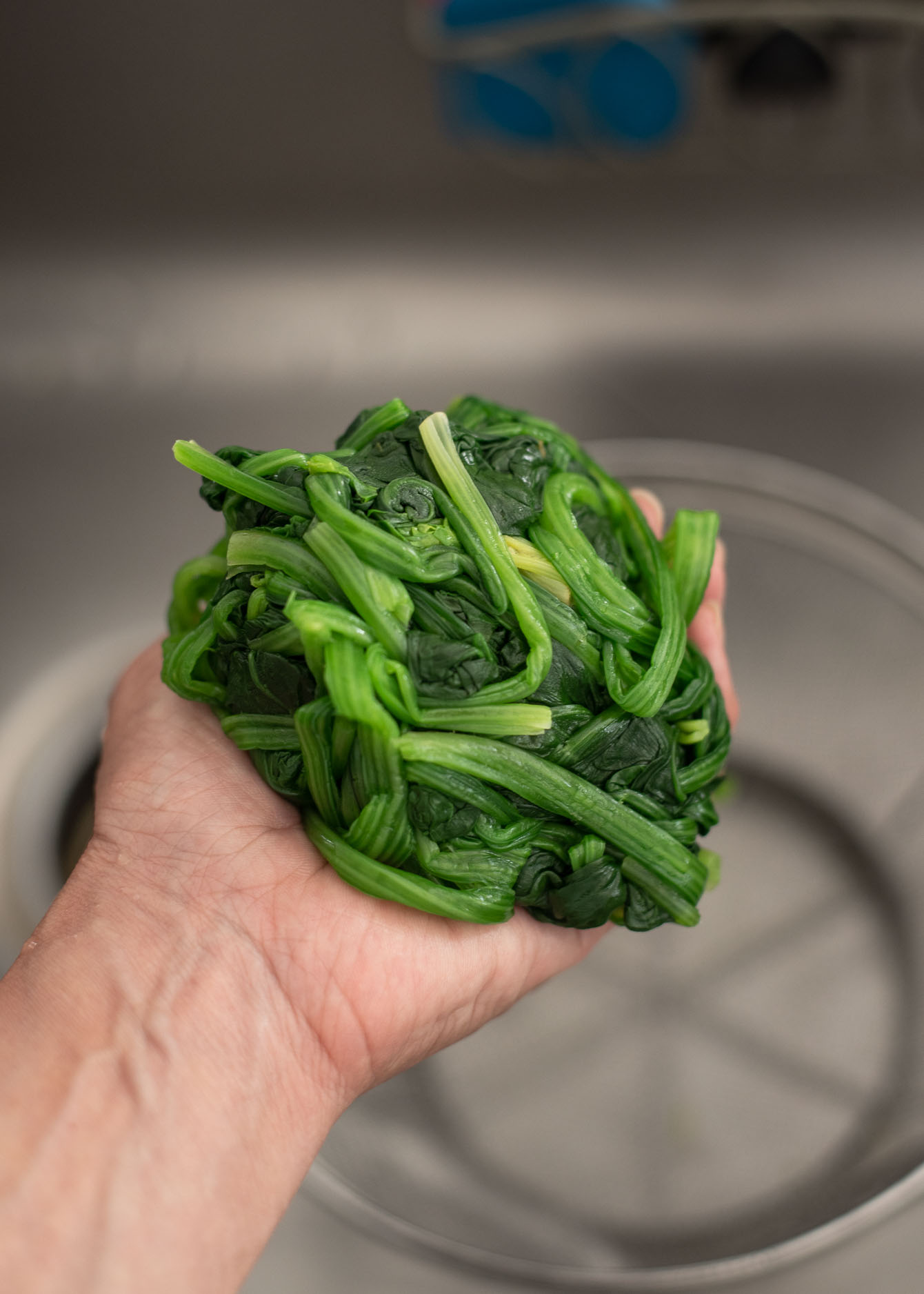
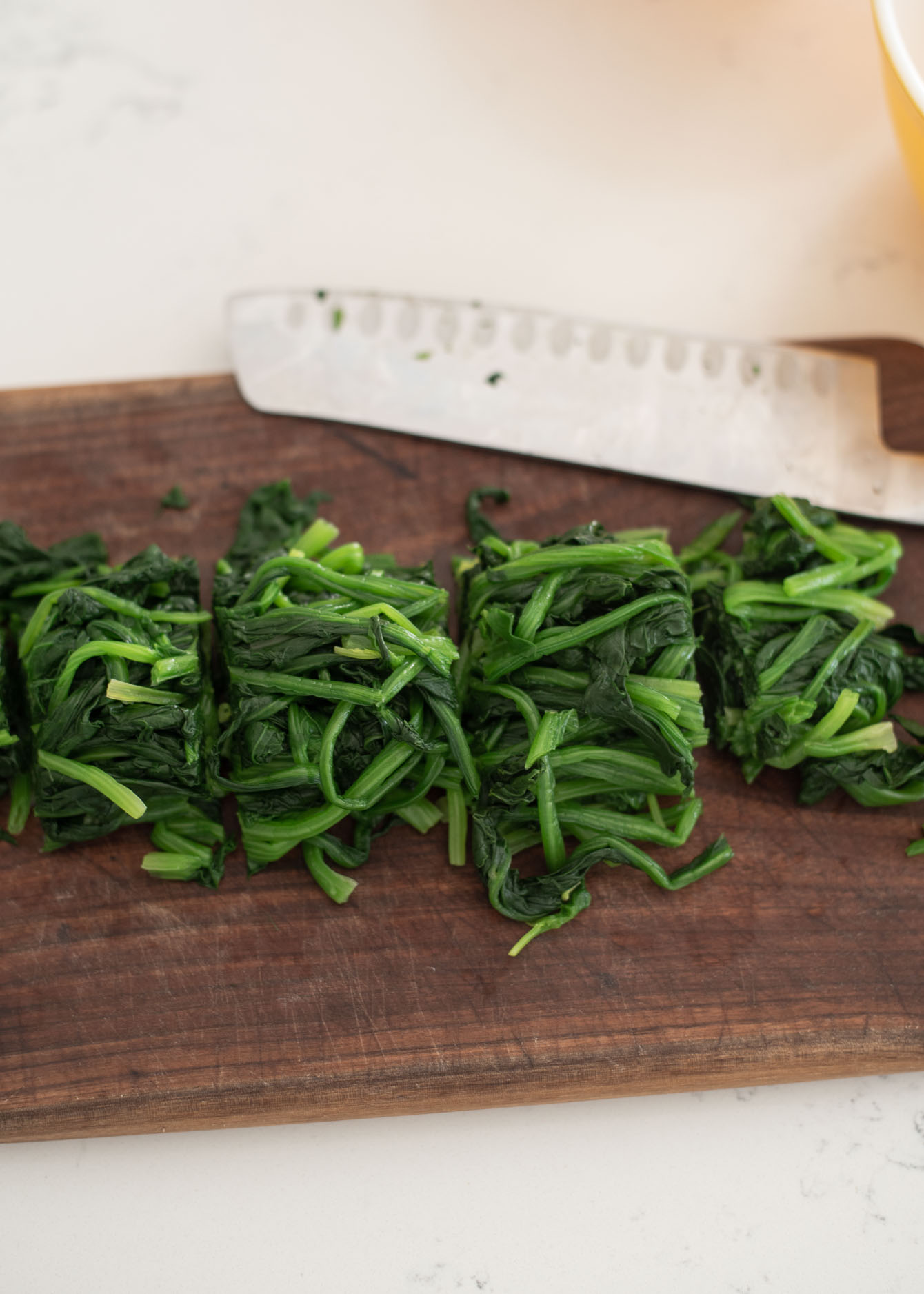
Squeeze out the excess moisture and cut the spinach into bite size pieces if the strands are too long.
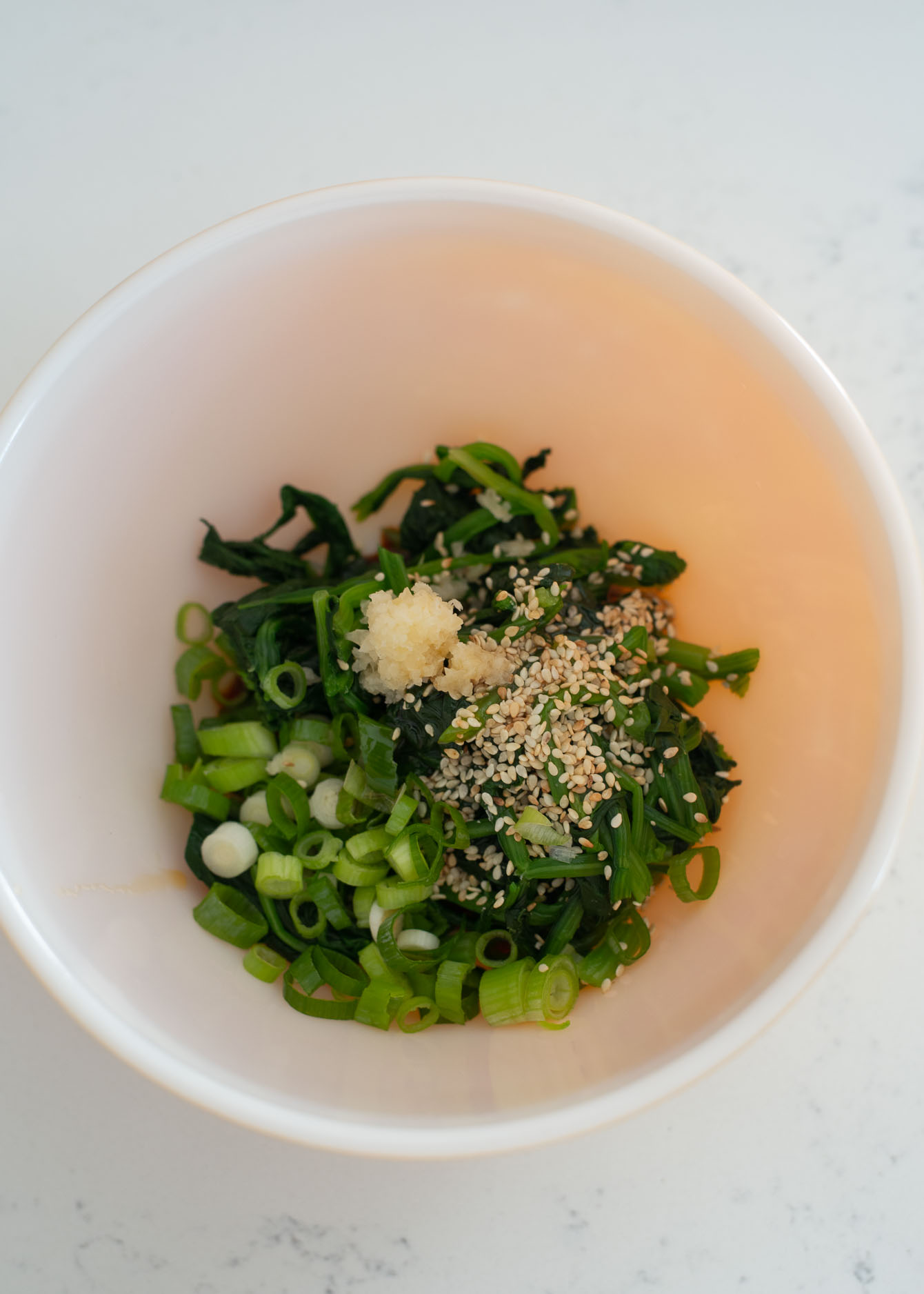
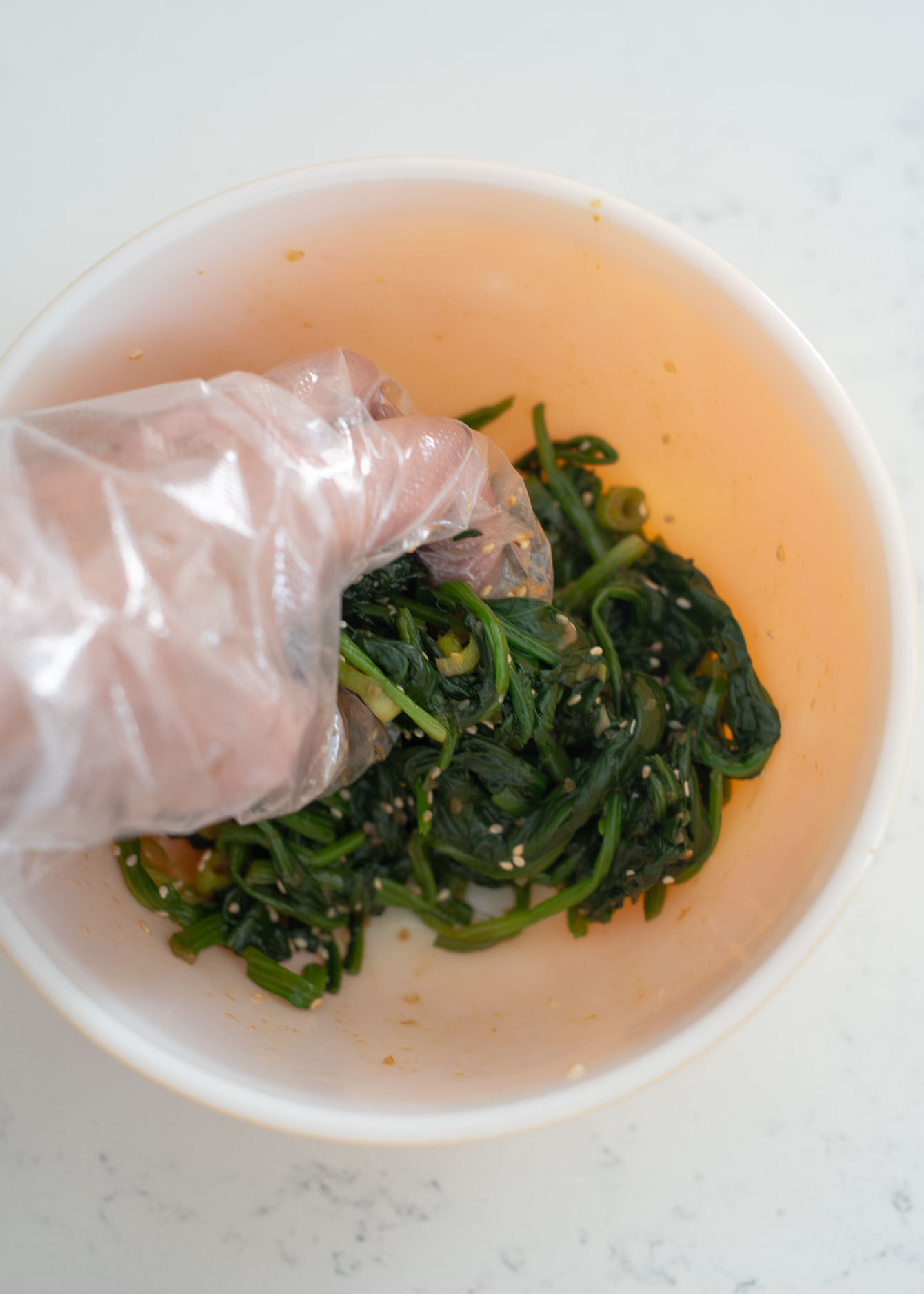
A light mix with soup soy sauce, garlic, and sesame oil is all it takes. This is the version most Koreans serve every day.
Tip: Use soup soy sauce (gukganjang) if you can — it seasons without darkening the spinach.
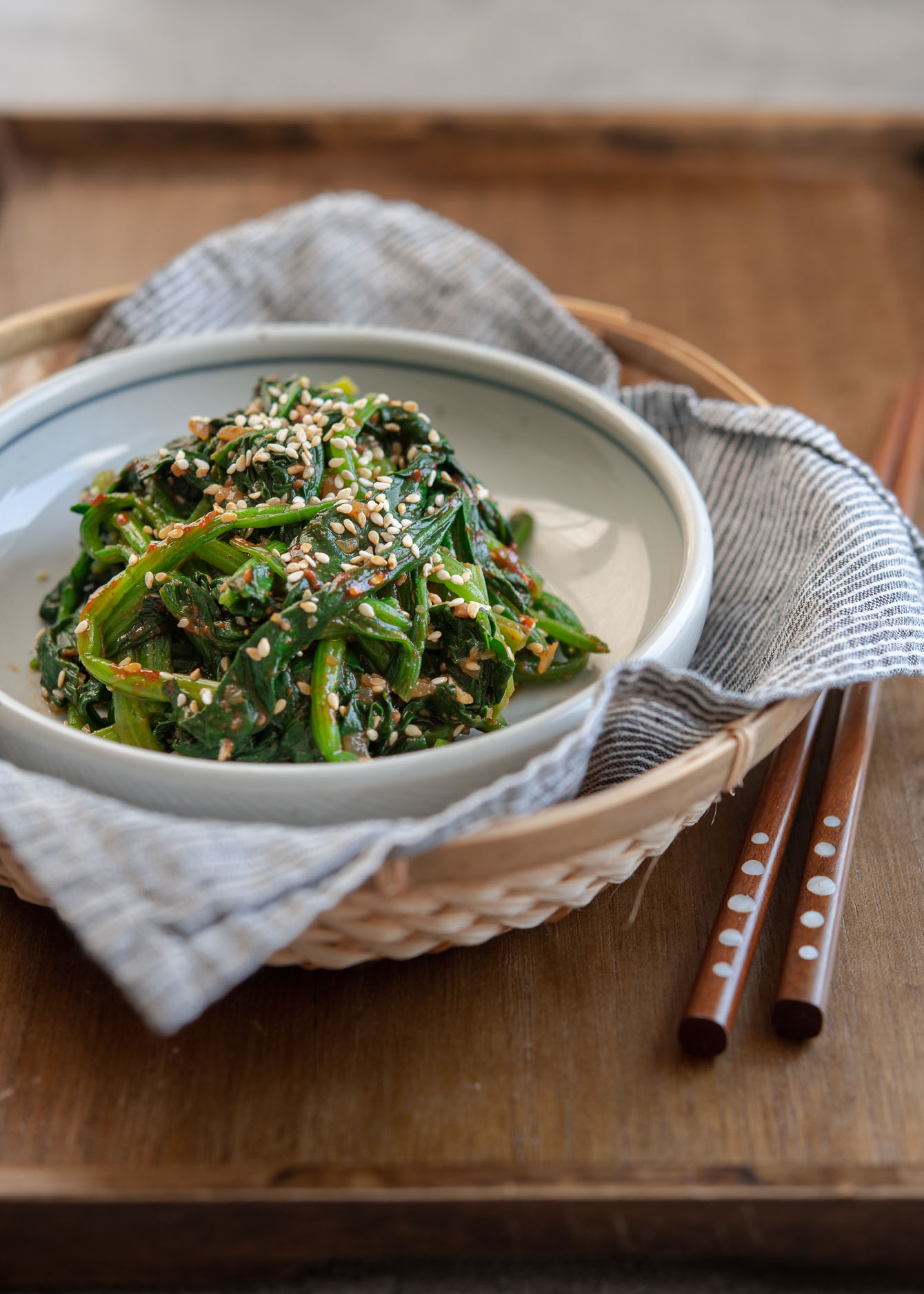
Spicy Gochujang & Doenjang Version
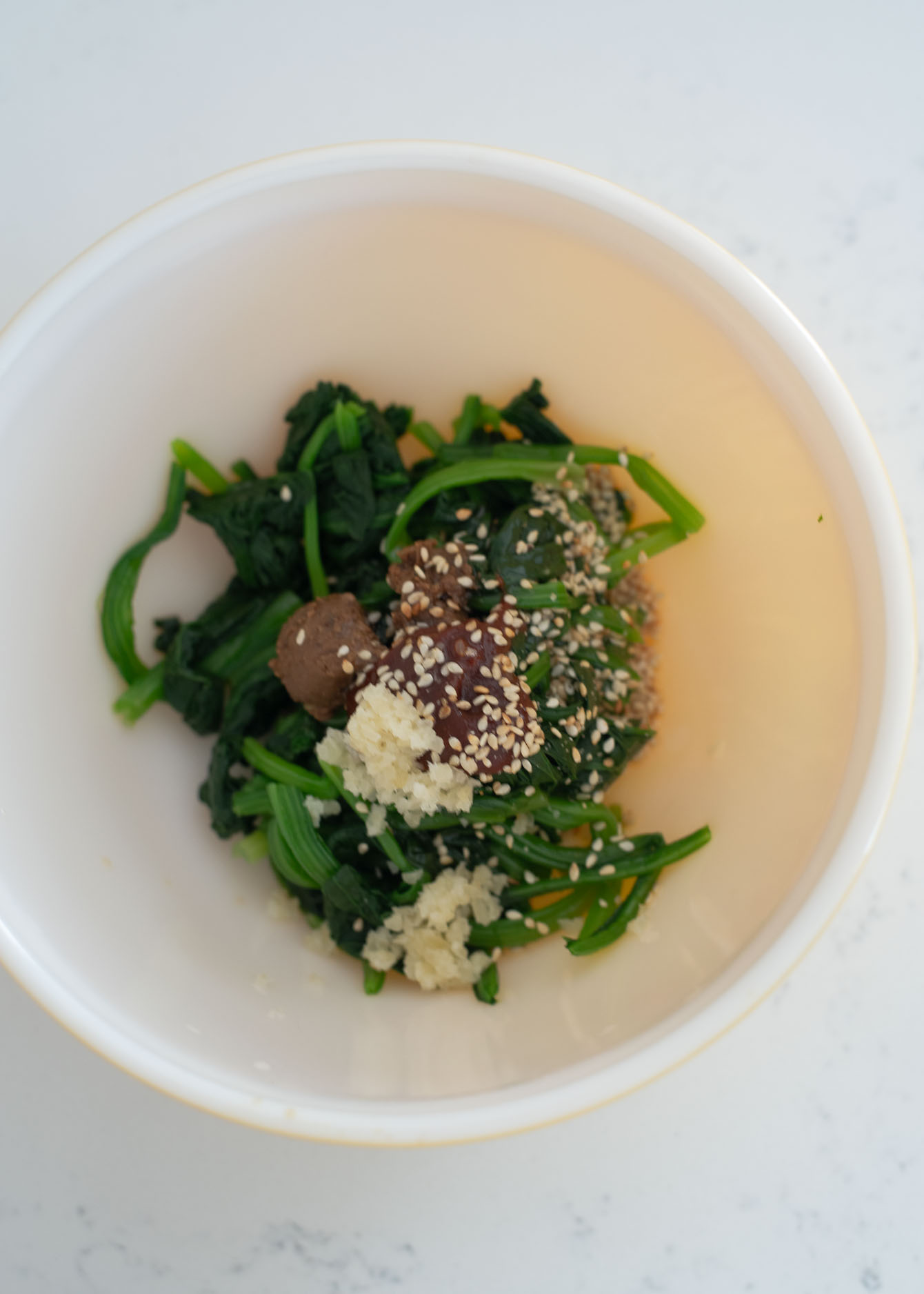
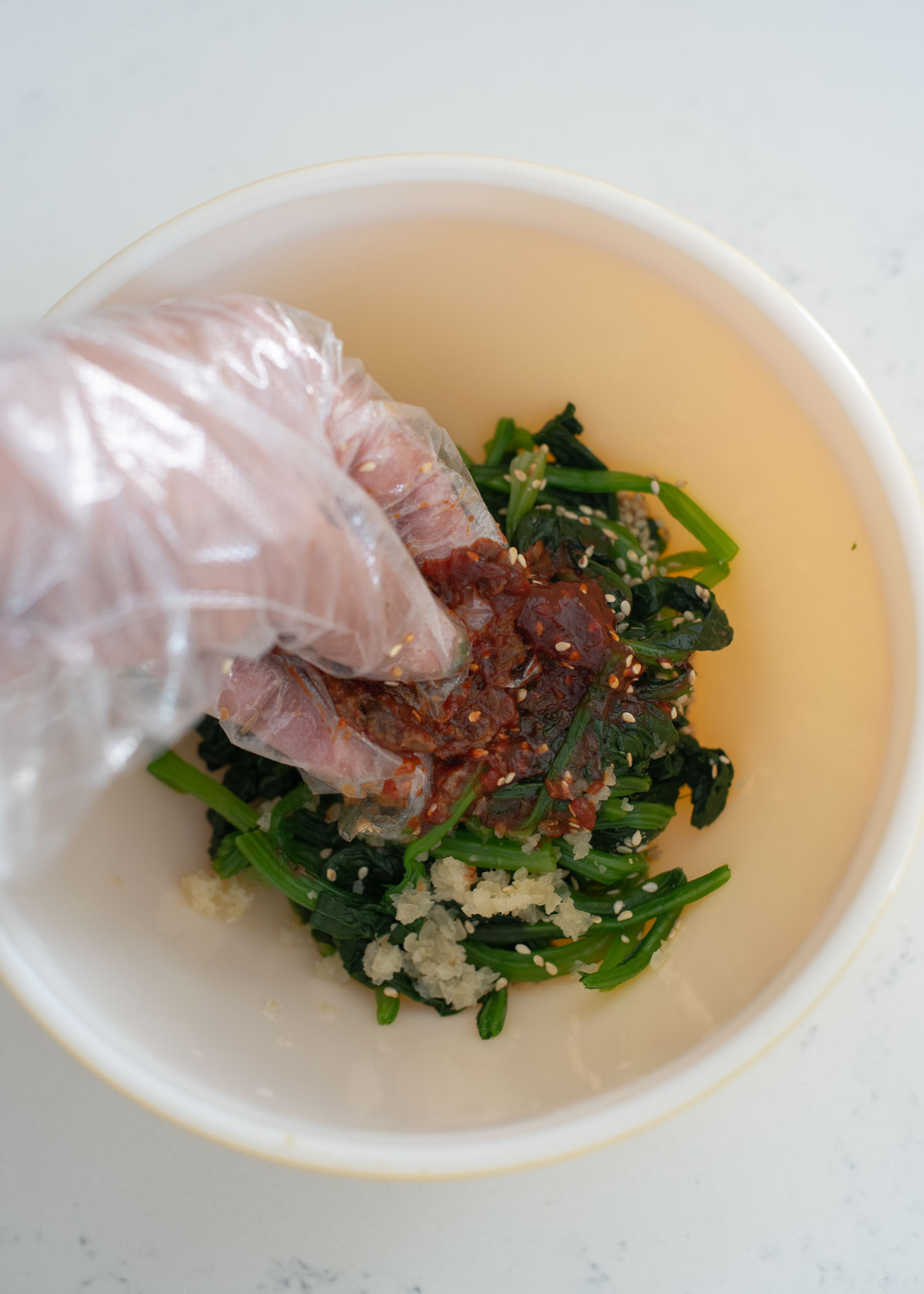
The base steps are the same, but the seasoning is bold and earthy with gochujang, a touch of doenjang, garlic, and sesame oil. Just rub the pastes between your fingers and toss everything up. My family loves when I make this version for a little extra kick at the table.
Tip: Adjust the spice level to your taste — I keep mine milder than my mom did.
I often make this spinach banchan when I cook beef bulgogi or LA galbi — the fresh, nutty flavor balances out the rich, marinated meat so well. If you’re planning a Korean BBQ night, I highly recommend pairing them together.
Storage Tip
Store in a container in the refrigerator for up to 1 week. You can serve them chilled right out of fridge. Do not freeze. This spinach side dish doesn’t freeze well.
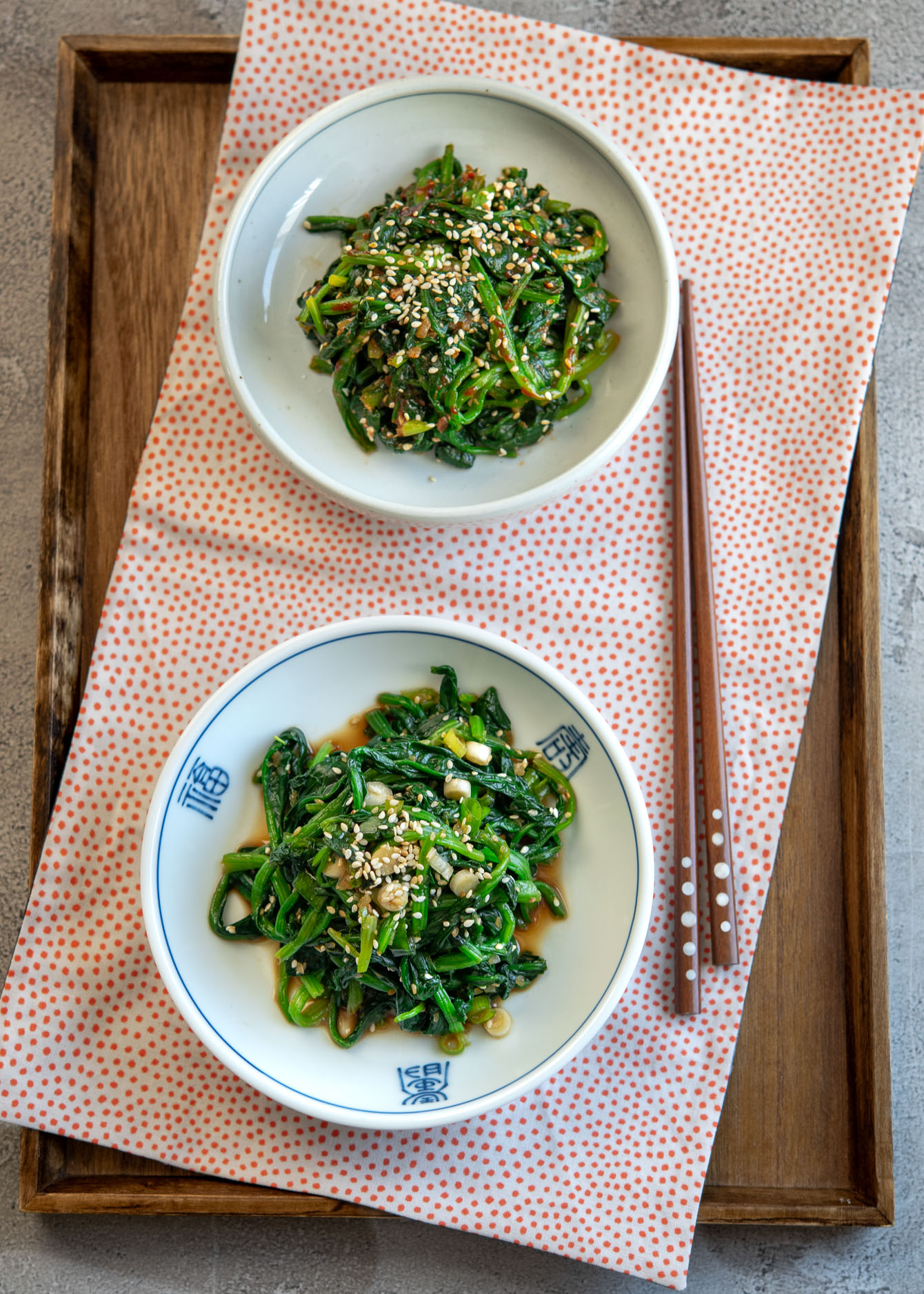
I first published this post in Feb, 2012 and have since updated it with additional write-up, images, and a video.
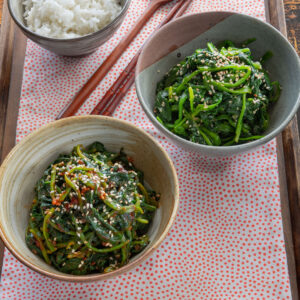
Korean Spinach Namul (2 Ways: Classic & Spicy)
Recipe Video
Ingredients
For classic spinach banchan
- 1 bunch spinach, cleaned
- 2 tsp (10 ml) Korean soup soy sauce (gukganjang), or 1 tbsp soy sauce
- 1 clove garlic, finely minced
- 2 tsp (10 ml) sesame oil
- 2 tsp (6 g) toasted sesame seeds
- 1 green onion, finely chopped
For spicy spinach banchan
- 1 bunch spinach, cleaned
- 2 tsp (12 g) Korean chili paste (gochujang)
- 1 tsp (6 g) Korean soybean paste (doenjang)
- 1 clove garlic, finely minced
- 2 tsp (10 ml) sesame oil
- 2 tsp (6 g) toasted sesame seeds
Instructions
To clean and blanch the spinach
- Bring a pot of water to boil. Add some salt and the spinach to the water; blanch for 30 seconds. Drain the spinach in a colander and rinse under cold water until all the heat from the spinach has been cooled. Squeeze the spinach firmly to remove excess water. Place spinach on the cutting board and cut the spinach into 3-inch long pieces.
To make classic spinach banchan
- Put spinach in a mixing bowl. Add Korean soup soy sauce (or soy sauce), garlic, sesame oil, and sesame seeds. Toss with your hand to incorporate the seasoning into the spinach.
To make spicy spinach banchan
- Put spinach in a mixing bowl. Add gochujang, doenjang, garlic, sesame oil, and sesame seeds.
- Smear the Korean pastes together with your fingers to mix them first, then toss everything together to incorporate the seasoning into the spinach.


I made this side dish (both versions) for a dinner party I hosted today and everyone loved it!
So easy, tasty and full of flavor! I just ate the left overs as a snack..
Oh my! I’ve always loved spinach but this is a different level. Gotta admit, I preferred the gochujang version.
I Like gochujang version as well. Glad that you like it. Thanks!
This delicious-looking recipe just showed up on Yummly, so I’m going to bookmark it.
How similar is doenjang to miso? I have miso and gochujang in my refrigerator at the moment.
You can substitute with miso in place of doenjang. It should work fine.
Great! Thanks for the quick reply.
Hi,, nice to find ur recipe!! I’m Indonesian and I can not find the chili paste here. Any idea?
Hi, I would like to know, I saw that Korean always hv plenty of side dishes in every meal time. Some are prepared before and kept in refrigerator. Could u please tell me what are those side dishes that can be kept for long time in refrigerator? Does spinach one of them? What I knew that spinach hv to be eaten when it’s fresh. Thanks in advance.
Spinach can last in the fridge for a week. Any Korean side dish made with fresh vegetables can last about a week in the fridge. Some made with dried or preserved can last whole lot longer.
mmmm I love spinach! This looks like a great recipe! Will be making it soon!
Thanks Holly, do you think i can use this recipe for cucumber instead? Haven't seen this type of spinach!
That is one perfect looking garlic bulb!
Really like this blog! And I also love the way you take photos of your food! 🙂
FFW.
– the Lukas
I love your step by step pics and again another yummy recipe!
ooh I love this! I think I actually prefer this rustic version, it sound spacked with flavour and hearty goodness!
I love spinach great post
I cannot wait to try it, you make cooking look so simple.
what if I have a cat ? Can my cat have your mice ?
I love your step by step pics and again another yummy recipe!
I like doenjang in my namul dishes as well. Your spinach looks so fresh, and the dish looks delicious!
Thank you Gria. Korean side dishes are really appetizing and most of them are quite healthy. Hope you can start making Korean food at home.
Thank you. Cleaning vegetables and fruits with baking soda is great way to get rid of pesticides on the surface.
Thanks Erica. Vegetables from farmers markets are the best. The short spinach is far better than the longer one. Hope they still have some.
This looks delicious! I love spinach!
this look so good!
Was just missing those nice dishes I had in Seoul. This is great, will make one myself soon. Cheers! 🙂
That's really cute of you to include cute hamster in your blog. Speaking of korean spinach, I went to a korean restaurant, couple weeks ago for dinner. I ordered Galbi and sticky rice. Anyways…what I really love of this restaurant is that we got a bunch of appetizers and one of them is the kind of spinach similar to yours. I may start learning how to make korean food. Super appetizing!
Yes, It only takes a few minutes to whip this up. Hole you like it, Lucy.
wow.. thanks for sharing this ingredients, i taste it before back in japan.
Oh this sounds so tasty and something like 10-15 mins to make?! That's a yes for a weekday meal 🙂
Thank you Rowena. Mice sounds worse than hamsters. I am not a big fan of rodents.
Hope you can give this spinach a try. It is different than ordinary Korean spinach and it tastes good with rice.
Ha ha! I, too, sometimes like the banchan more than the main dish. Doenjang is made of fermented soy bean and it is quite pungent. Gochujang is Korean red chili powder mixed in rice flour. Can't alternate each other in the recipe since they are completely different.
What a great recipe! So glad I found your site. I am Korean and LOVE Korean food. 🙂
Awww…the hamsters are so cute! My son had mice so I had to get used to them. I've only known about the vinegar-in-water tip for cleaning vegetables so this tip is good to know as well. Will need to definitely restock on both of those korean pastes…I go through them fairly quick but never have time to go into Milan to buy more. Oh, and congrats on being chosen for Blogs of Note!
I've always enjoyed banchan when I visit a Korean restaurant. Sometimes I even like the banchan more than the main course I get. Your spinach side dish looks absolutely delicious!
What's the difference between and doenjang and gochujang? I always get a big box of gochujang and use it for all the Korean dishes that call for the bean paste. Thanks for sharing!
i love everything korean! and i love your blog. great tip on cleaning the veggies with baking soda. thanks.
I've never made spicy spinach namul before. I will try this sometime. 🙂
oh this looks so yummy.
what a great tip for cleaning the spinach! i'm excited to try it out soon. i saw some of this smaller variety of spinach at the farmers market last weekend–i will definitely have to go and get a few bunches! 🙂 thanks for sharing this recipe, yum!
“Unless your spinach is grown organic, you want to clean them well”
Sorry, but no: organic does mean it’s going to be free from contaminants. E.Coli and salmonella do not distinguish between organic and conventional crops.